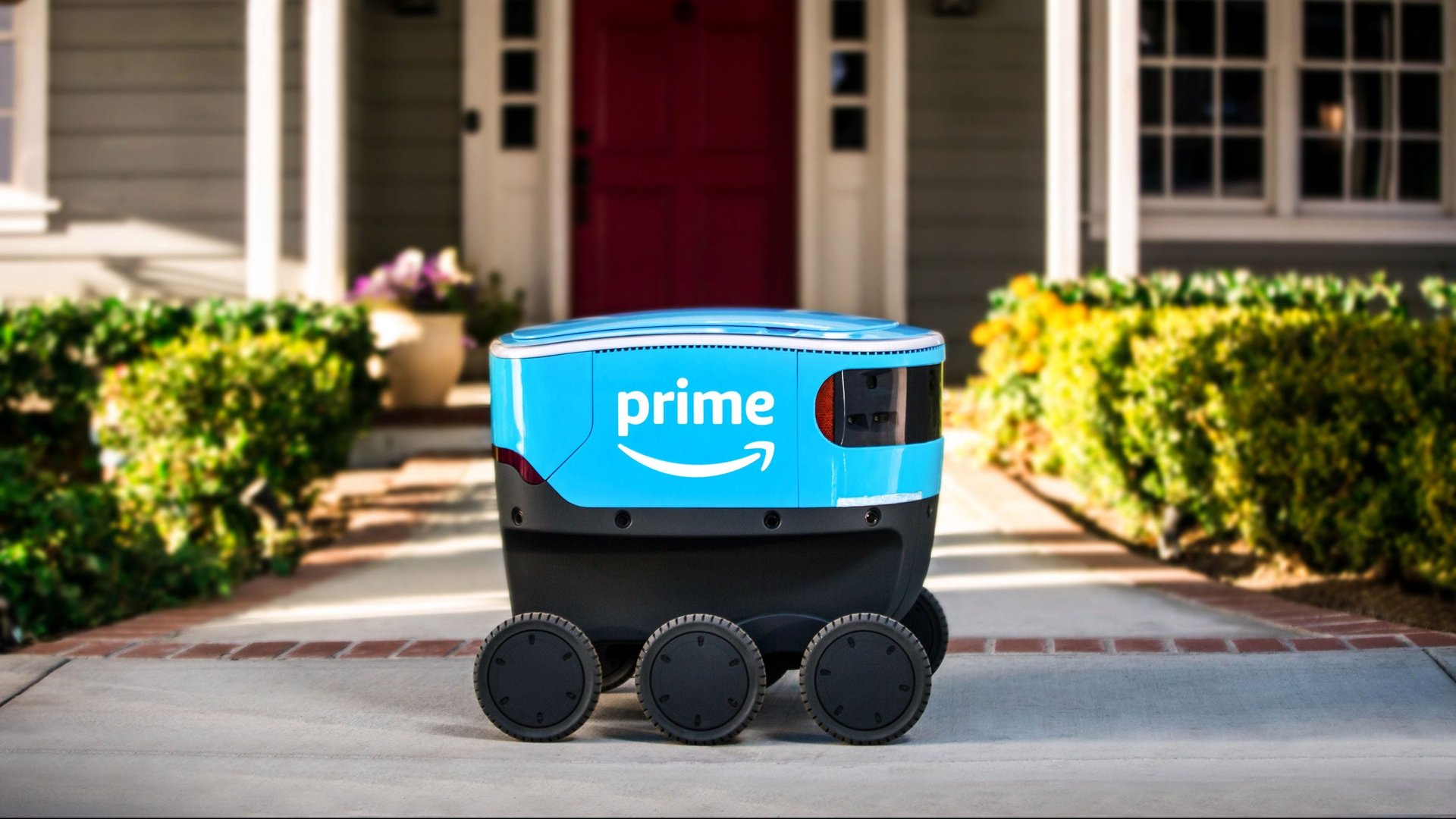Amazon’s new robot delivers packages to rich people
Amazon today (Jan. 23) unveiled Scout, a six-wheeled blue robot that delivers packages. The company said in its announcement that it’s field testing six Scout robots in a neighborhood of Snohomish County, Washington, during weekday daylight hours.


Amazon today (Jan. 23) unveiled Scout, a six-wheeled blue robot that delivers packages. The company said in its announcement that it’s field testing six Scout robots in a neighborhood of Snohomish County, Washington, during weekday daylight hours.
Scout robots are “the size of a small cooler, and roll along sidewalks at a walking pace,” according to Amazon’s release. Amazon’s robots are similar to those that Starship Technologies, a robotics startup, introduced in 2016 to make deliveries in a handful of US and European cities. In the US, Starship has partnered with food-delivery startups DoorDash and Postmates on its tests. In December, Postmates debuted its own delivery robot, a bright yellow four-wheeled carriage named “Serve.”
Delivery companies believe they can become more profitable by replacing their main expense—human labor—with trundling robots like Serve and Scout. Amazon would probably also like to reduce its labor costs and have fewer pesky humans around who do things like complain to the press about poor work conditions.
One of Amazon’s challenges in 2019 will be expanding Prime, its signature membership program, to lower-income households. A recent report from analysts at UBS found 66% of US households earning $100,000 or more were Amazon Prime members, compared to 54% of households earning $40,000 to $99,000. Just 38% of households earning less than $40,000 subscribed to Prime. Some analysts fear that if Amazon can’t sell lower income households on Prime, its US market share will be tapped out.
On this, Scout doesn’t promise to be much help. For example, the median household income of 98296, one of two postal codes in Snohomish, is $119,044. Roughly one-third of households in Snohomish earn more than $150,000 a year, boosting the zip code’s mean income to $134,103. Compare that to the median household income of Washington state: $66,174. Whether Scout would be able to traverse more densely packed urban areas, where many lower income people actually live, is unclear.
It makes sense that Amazon would want to test Scout a stone’s throw from its Seattle headquarters, which Snohomish is. But it also shows how Amazon designs its logistics with the well-off first in mind. Many of Amazon’s newest efforts to build out physical retail are centered on Whole Foods, a known haunt of wealthy shoppers. Under Amazon’s management, Whole Foods is also shuttering its 365 stores, which were designed to appeal to shoppers with lower prices. Scout might be a publicity stunt right now—much like the drone deliveries the company has been working on since 2013—but it’s made for the rich and leaves out everyone else.